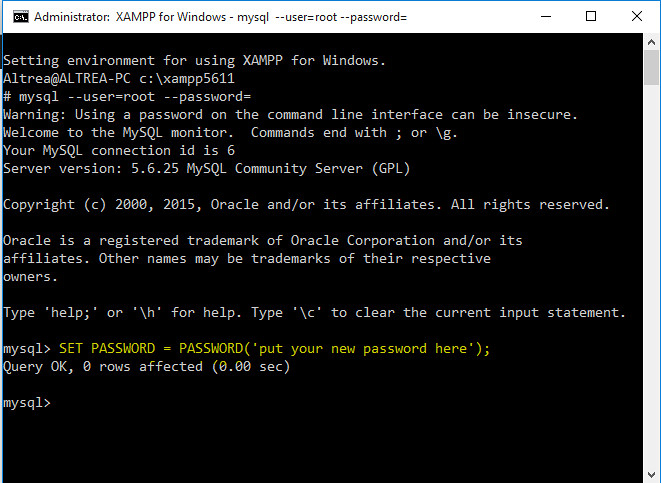

For accessing phpMyAdmin on a live server, your hosting does set the credentials for you.
RESET PHPMYADMIN ROOT PASSWORD PASSWORD
When your application is live, you have to pass both username and password in order to access the database. In this article, I show you 3 possible ways to reset the password for your root account. Your system should restart. Confirm that your new password works by logging in.Do you want to change a password for the root account of your MySQL server? Sometimes you may want to set a password for the account. Type the following, pressing enter after each line: mount / -o remount,ro sync reboot Press Enter, and the system should prompt you to enter and confirm a new password. To enable read/write access on your hard drive, type the following: mount / -o remount,rw Step 4: Changing the Password You should have a command line, and you’ll have root privileges. (The system will display the command to use.) Step 3: Remount the Drive Press Enter, then boot into single-user mode by pressing Ctrl-X or B. Use the arrows to highlight the line that starts with kernel or Linux.Īt the end of the line, add a space then type single. Use the arrows to highlight the version of Linux you boot into, then press e. Restart the system, then tap the Esc key about once per second to launch the GRUB menu. This is a similar process as in Ubuntu, with a couple of variations.

Do so, then follow the prompts to enter and confirm a new root password. The system should prompt you to enter your existing password. Step 2: Change the PasswordĪt the prompt, type the following, then press Enter: sudo passwd root Or, click Menu > Applications > Utilities > Terminal. Right-click the desktop, then left-click Open in Terminal. Step 1: Access the Command Line (Terminal) Changing the Root Password in CentOSĬhanging a password in CentOS is almost identical to changing it in Ubuntu. Hit Enter, and your system should restart. Don’t press any keys, let the system come up to the login screen, and test to make sure the new password works. Once you’ve entered and confirmed the new password, reboot the system by entering the following: shutdown –r The system asks you to type a new UNIX password and then to retype it. Substitute the name of the user for username, then press Enter. This should allow you to make changes to the data on the hard drive. But we need write-access to change the password, so we’ll need to remount the drive with the appropriate permissions.Īt the prompt, type: mount –o rw,remount / That means it can look at the data, but cannot make any changes. Right now, your system only has read-only access to your system.

Step 3: Remount the File System with Write-Permissions The system should respond by giving you a command-line interface with a prompt. Use the arrow keys to navigate to the option labeled root and press Enter. The system should display a menu with different boot options.

Select the second one from the top – the highest revision, followed by (recovery mode). The system should come up with a black and white GRUB, or boot menu, with different Linux kernel versions displayed. Once you see the splash screen for the computer manufacturer, hold down the shift key. In some situations, you may need to access an account for which you’ve lost or forgotten a password.


 0 kommentar(er)
0 kommentar(er)
